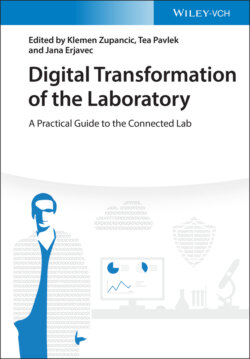Читать книгу Digital Transformation of the Laboratory - Группа авторов - Страница 19
1.2.4.2 Data in the Protocol‐driven Lab
ОглавлениеIn the protocol‐driven lab, whether it is in a manufacturing or sample testing domain, there is again a fundamental process which operates to drive the value chain. Unlike the “HEAS” cycle this is more of a linear process. It starts with a request and ends in a communicable result or a shippable product. This process, which we refer to as the “request‐experiment‐analyze‐feedback” (REAF) process, is outlined in Figure 1.4.
There are many similarities, often close, between the linear REAF process and the HEAS cycle especially in the Experiment/Observe and Analyze/Report steps, but the REAF process does not start with an idea or hypothesis. REAF represents a service, which starts with a formal request, for example to run a protocol to manufacture a good or to test a sample, and ends with a product or a set of results, which can be fed back to the original customer or requester. As we noted in Section 1.2.4.1 above, it is increasingly likely that the LotF will be set up with a Laboratory as a Service (LaaS) mentality; REAF may therefore be much more broadly representative of how labs of the future might operate.
Figure 1.4 Request‐experiment‐analyze‐feedback (REAF) process.
It is important to acknowledge that the data and information, which drive Request and Feedback, are quite different in REAF than in the corresponding sections in HEAS. With the focus of this book being on Experiment/Observe, and to a degree Analyze, we will not say anything more about Request and Feedback (from REAF) and Hypothesis and Share (from HEAS). Instead, the remainder of this section focuses on what the Experiment and Analyze data management aspects of the LotF will look like, whether that LotF is a hypothesis‐ or a protocol‐driven lab. This is made simpler by the fact that in the Experiment/Observe and Analyze/Report steps, the data challenges in the two different lab types are, to all intents and purposes, the same. In the remainder of this section we treat them as such.
